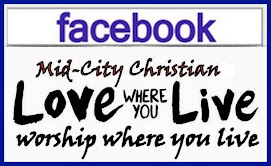Thursday, December 8, 2016
What is official liturgy?
Liturgy
often changes to meet the needs of the faithful, says Father Mark
Francis. Nowhere is this more evident than during the Christmas season.
For many Catholics, the word liturgy brings
to mind processionals with incense and a crucifix, Eucharistic prayers,
or the Communion Rite. Vestments, incense, and music may be floating
around in our mental pictures as well. But what about other kinds of
faith practices? Eucharistic adoration or devotions to patron saints?
The blessing of the animals on the feast of St. Francis or the
celebration of Our Lady of Guadalupe? Are these celebrations also
liturgical? Or are they merely popular reflections of our faith based on
each parish's individual nationality and culture?
Viatorian
Father Mark Francis says that it's not so easy to differentiate between
the two. Even the liturgy we assume is universal and unchanging--like
the Roman Rite that we follow each time we go to Mass--originated with
popular practices during the Roman Empire. Liturgy, a Greek word, means "the work of the people"; it's the community coming together to celebrate the presence of God among us.
Catholics
around the world may worship using the same rubrics, Francis says, but
each culture and each congregation adapt the liturgy to reflect their
own needs. "If you celebrate the Roman Rite exactly as it is written
without being attentive to the people with whom you're celebrating," he
says, "then you're not celebrating liturgy; you're celebrating
archaeology."
There's no time that this diversity and the living nature of liturgy is more apparent than at Christmas. Las Posadas, Simbang Gabi,
Advent wreaths, and the feast of Our Lady of Guadalupe are all examples
of popular traditions that have been integrated into the liturgical
celebrations of Advent and Christmas.
What's the difference between popular religion and official liturgy?
Popular
religious custom is essentially that which is not considered official
or mandatory. Sometimes these are folk customs, sometimes other rites.
As the Roman Rite developed, the official rite became increasingly
separated from the people. You had the priest located way up in the
sanctuary doing his thing in Latin with other clerics up there.
People
went to Mass, but they couldn't follow it. They couldn't hear it; most
of the prayers were said silently or very softly. All the clerical types
up at the altar were doing all the actions. So what did people do,
especially those who weren't literate? They came, they prayed the
rosary, they did other kinds of devotions. Even today, if you go to
Italy you can sit in Mass and someone will be walking up the aisle on
her knees to a statue, and no one thinks anything of it.
Subscribe to:
Post Comments (Atom)

























No comments:
Post a Comment